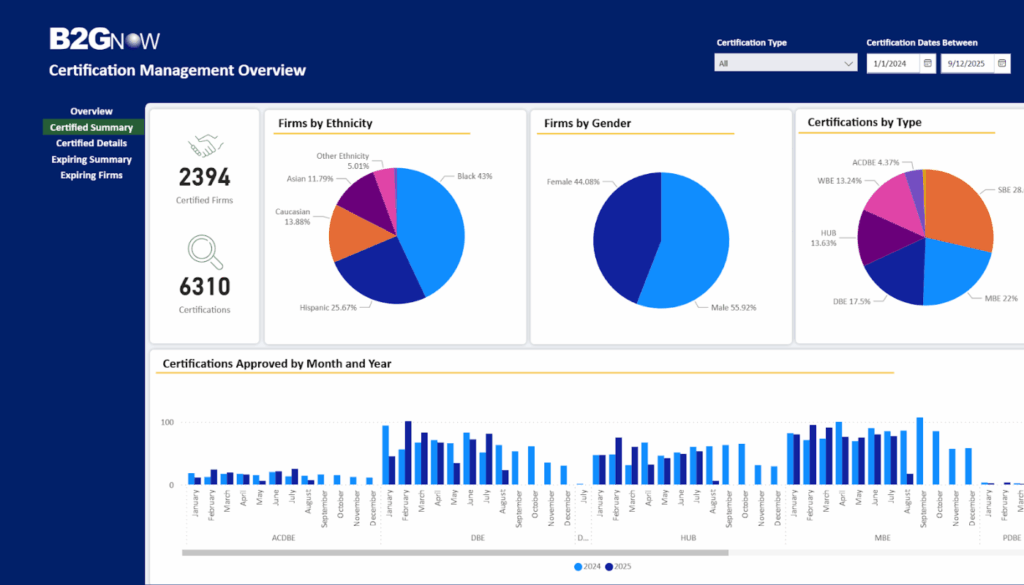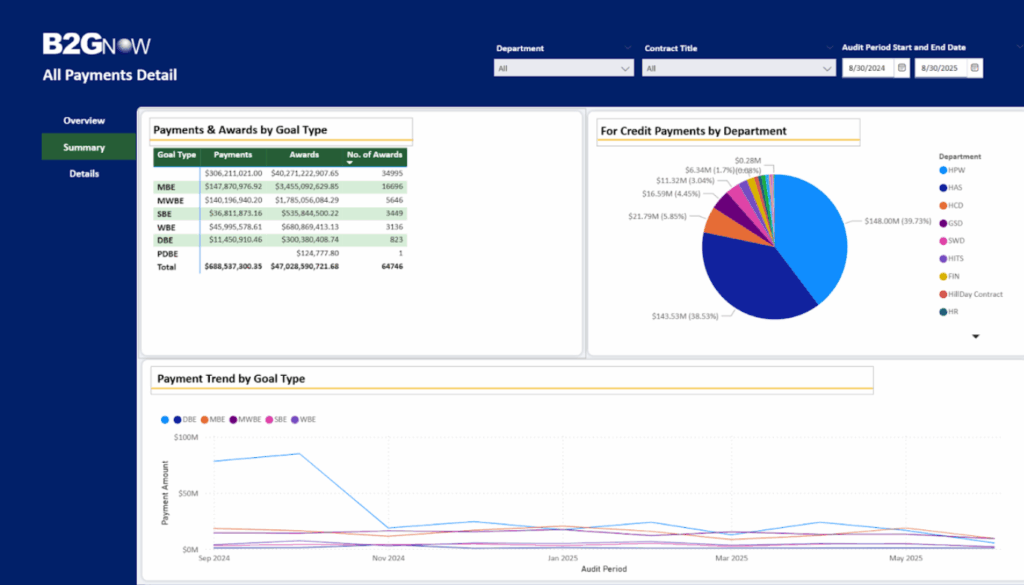The Days of B2G is our annual series celebrating a year of innovation, progress, and meaningful enhancements across our solutions, spotlighting updates that help our entire community work more efficiently and transparently.
As we wrap up the Days of B2G 2025 celebration, we turn our attention to the year ahead. In 2026, we will continue our commitment to modernizing the platform and enhancing the tools that support certification, compliance, and vendor engagement. These updates reflect our long-term vision of delivering a unified, intuitive, and AI-assisted experience for all customers.
Stronger Integrations Across Solutions
We expanded single sign-on (SSO), enhanced data connections, and began building combined reporting capabilities across B2Gnow, eComply, and BlackCat. These improvements help customers streamline workflows, reduce duplication, and centralize key compliance and contracting data in a single location.
As we continue to align our solutions, customers using more than one B2Gnow product will benefit from more seamless transitions, more consistent data management, and future combined reporting across compliance and labor workflows.
Modernized Online Applications Coming in 2026
The B2Gnow Online Application module, a core component of our Vendor Management solution, already streamlines vendor certification with online document upload, automated workflows, and real-time status tracking for both applicants and staff.
In 2026, we will further modernize this experience. The redesigned interface will be more intuitive and efficient, focusing on clarity, simplicity, and accessibility to help applicants navigate complex requirements with greater confidence.
These improvements lay the foundation for a more supportive application experience, helping to reduce errors and improve processing quality.
AI Support for Vendors Throughout the Application Process
As part of the modernization of the B2Gnow Online Application module, optional AI will guide vendors through the application workflow by:
- Suggesting answers or clarifications based on uploaded documents
- Proactively flagging inconsistencies
- Explaining complex questions in plain language
- Helping applicants understand what is needed at each step
These features are designed to simplify the application process, leading to improved application completeness and greater vendor satisfaction. With AI assisting applicants at every stage, agencies can expect higher-quality submissions and more efficient reviews.
A Modern Certification Management Experience for Certification Teams
The Certification Management module is a core B2Gnow module that tracks the entire certification lifecycle, from application to renewal, by automating workflows with checklists and centralizing all supporting documentation in one location.
In 2026, we will introduce a modernized version of this module. This update will streamline review workflows, help staff manage large caseloads, reduce repetitive data checks, and provide clearer visibility into decision pathways.
AI assistance will support certifiers by identifying risky areas, highlighting missing or inconsistent data, and providing context for regulatory requirements. These capabilities are designed to help programs maintain defensible decisions and keep pace with evolving federal expectations.
Upcoming Training to Support the 2026 B2Gnow Initiatives
We will host customer-exclusive Power Analytics Training Webinars along with a new webinar series focused on support processes and user operations.
B2Gnow customers can register for a Power Analytics Training Webinar from the B2GnowSystem News.
Stay tuned for registration details for the new webinar series on support processes and user operations.
DRIVE 2026 will also include expanded sessions focused on modernized modules, AI features, and best practices for certification and compliance programs.


